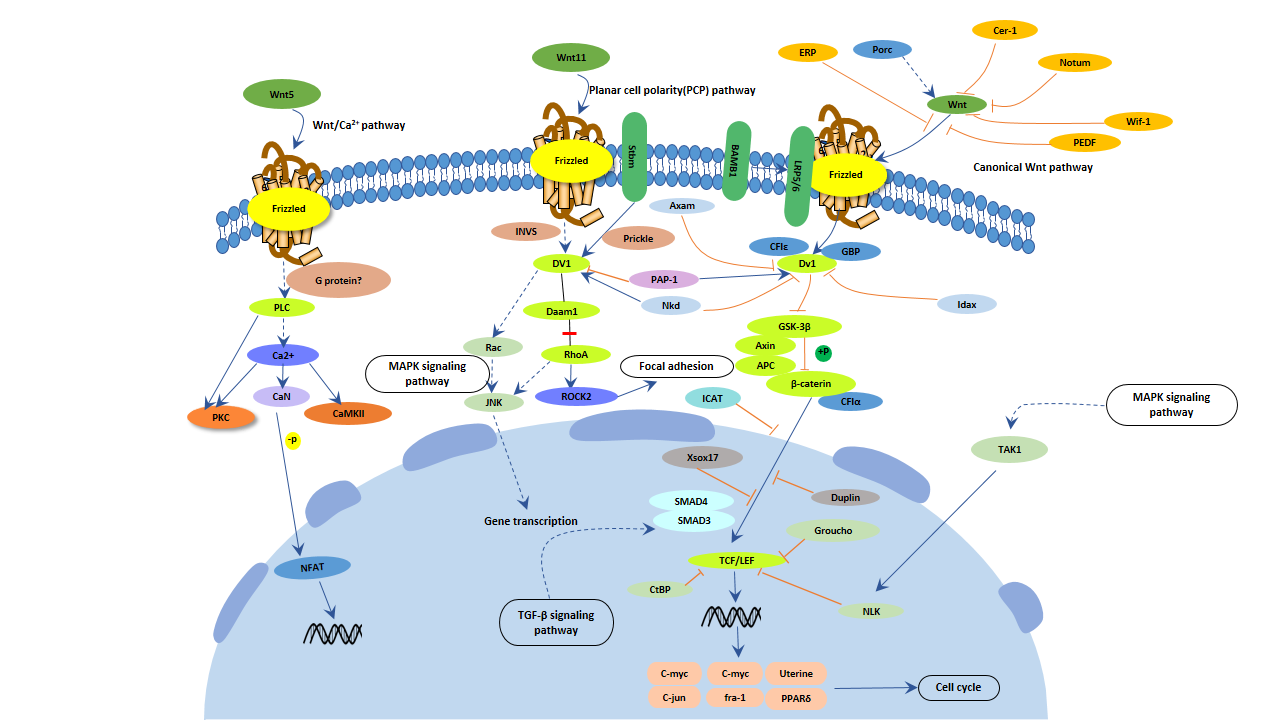
What is Wnt Signaling Pathway?
The Wnt signaling pathway, highly conserved amongst various species, is a group of signal transduction pathway made of proteins that pass signals into a cell through cell surface receptors.
The Function of Wnt Signaling Pathway
Wnt signaling pathways are highly evolutionarily conserved in animals. It was first identified for its role in carcinogenesis, then for its function in embryonic development, including body axis patterning, cell fate specification, cell proliferation and cell migration.
Additionally, Wnt signaling also controls tissue regeneration in adult bone marrow, skin and intestine. Later research found that the genes responsible for these abnormalities also influenced breast cancer development in mice.
The Processes of Wnt Signaling Pathway
Wnt signaling diversifies into three main branches, all three pathways are activated by the binding of a Wnt-protein ligand to a Frizzled family receptor, which transmits the biological signal to the Dishevelled protein inside the cell.
1. The canonical Wnt pathway, also known as classical, activates target genes through stabilization of β-catenin in the nucleus, and leads to regulation of gene transcription, and is thought to be negatively regulated in part by the SPATS1 gene.
The function of this pathway during embryonic development has been originally elucidated by experimental analysis of axis development in the frog Xenopus laevis and of segment polarity and wing development in the fly Drosophila melanogaster.
2. The planar cell polarity pathway involves RhoA and Jun Kinase (JNK) and controls cytoskeletal rearrangements. It mainly regulates the cytoskeleton that is responsible for the shape of the cell.
3. The Wnt/Ca2+ pathway is stimulated by Wnt 5a and Wnt 11 and involves an increase in intracellular Ca2+ and activation of Ca2+-sensitive signaling components, such as calmodulin-dependent kinase, the phosphatase calcineurin, and the transcription factor NF-AT. It mainly regulates calcium inside the cell.
If you want to know more information about Wnt signaling pathway, you can click the following link: https://www.cusabio.com/c-20690.html. This article focuses on Wnt family and related diseases.





